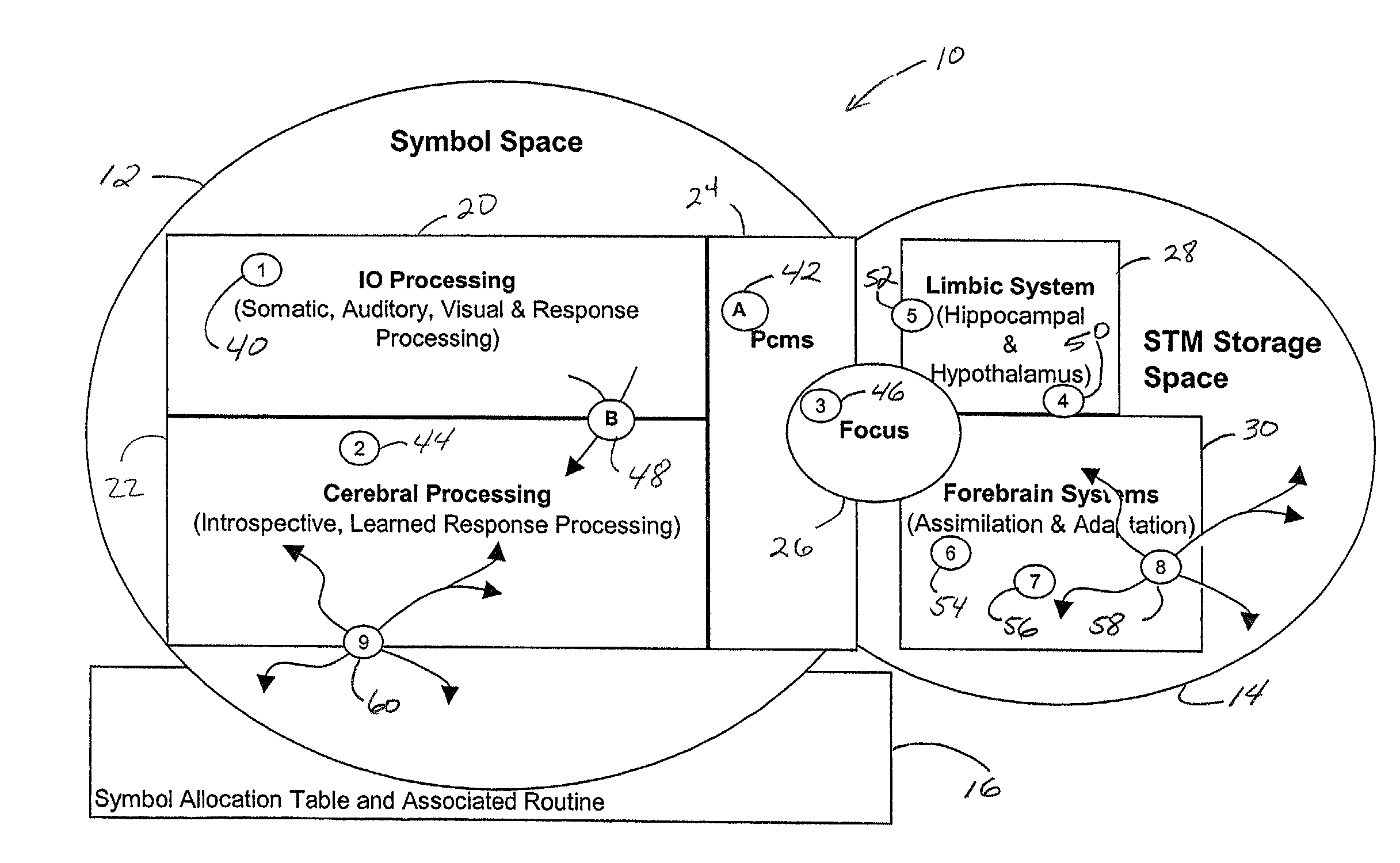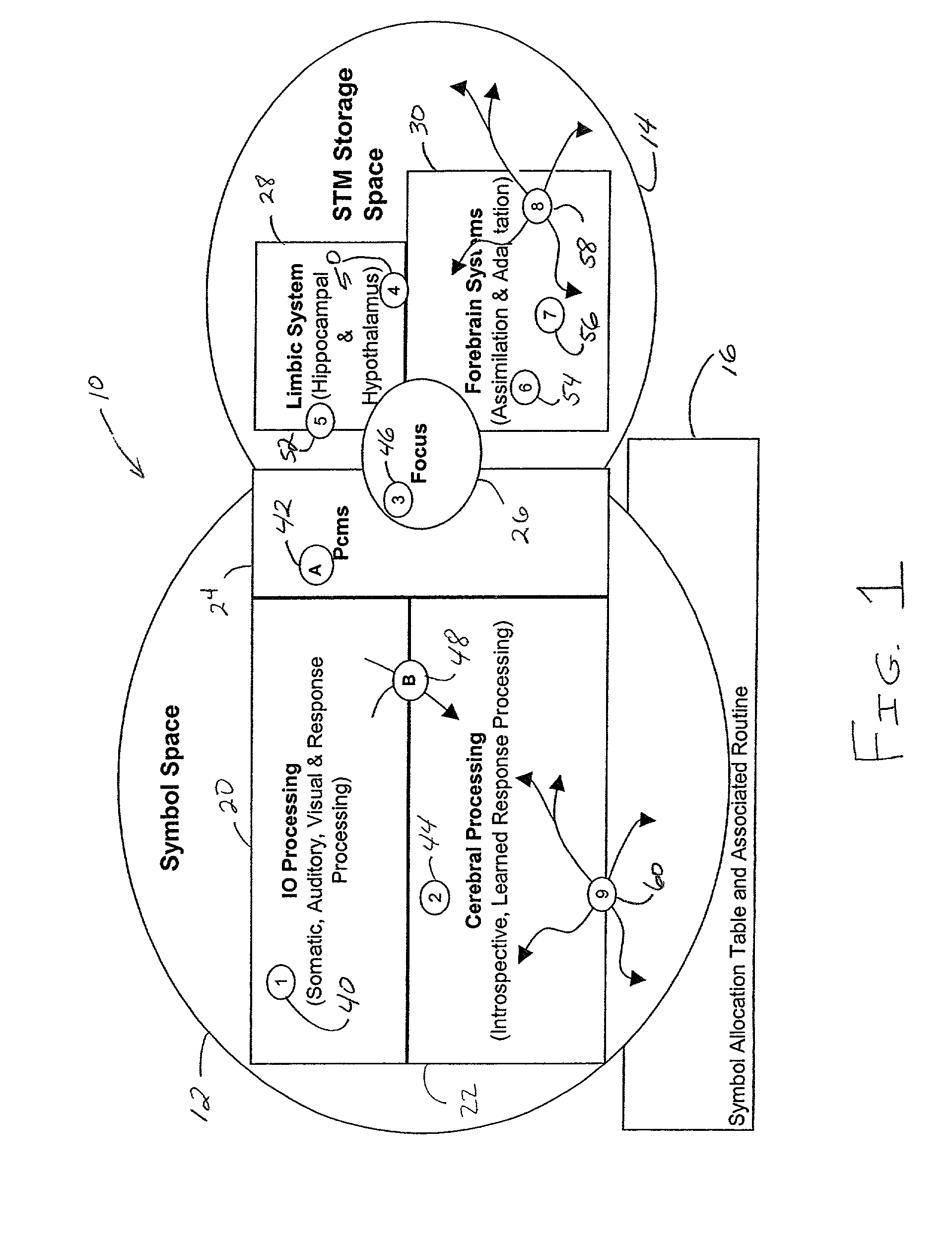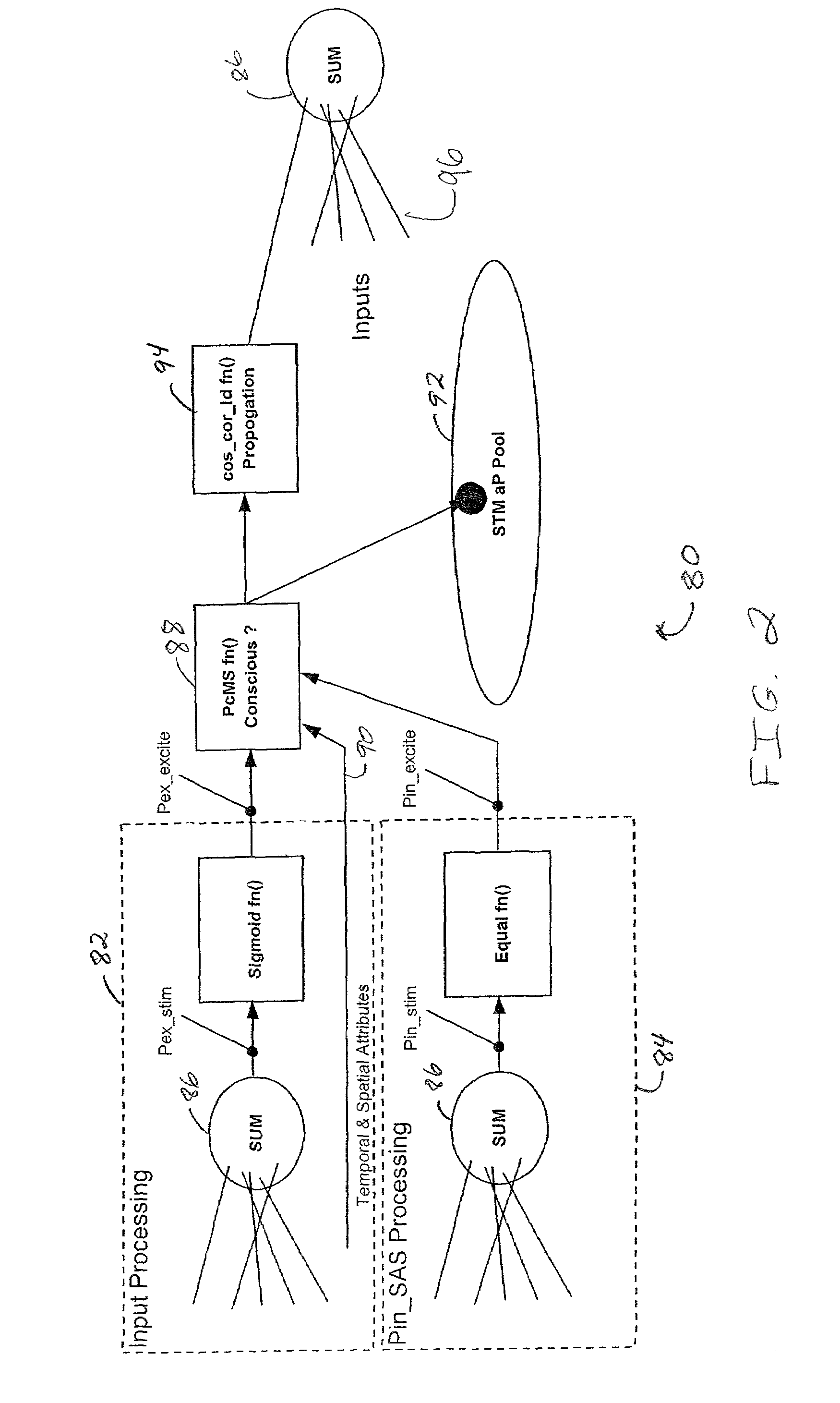Cognitive image filtering
- Summary
- Abstract
- Description
- Claims
- Application Information
AI Technical Summary
Benefits of technology
Problems solved by technology
Method used
Image
Examples
Embodiment Construction
[0033]Cognition can be defined as the processing of a time-series of thoughts and reactions which produce a result. The Cognitive Operating System (COS) described herein provides a cognitive capable environment for the processing of time-series stimuli and development of reactions to produce a results. The operating system does not attempt to duplicate higher brain functions or thought processes as in known applications. Rather, webs of highly connected symbols become the dominant unit through which thoughts are acted out, outputs become excited and learning processes in the brain become controlled.
[0034]FIG. 1 is an overview of one embodiment of a Cognitive Operating System (COS) 10. COS 10 includes a memory structure which is allocated into a symbol space 12, a short term memory (STM) image space 14 and a symbol allocation table 16.
[0035]Symbol space 12 includes a plurality of processing areas, some of which overlap into STM image space 14. The processing areas include I / O process...
PUM
 Login to View More
Login to View More Abstract
Description
Claims
Application Information
 Login to View More
Login to View More - R&D
- Intellectual Property
- Life Sciences
- Materials
- Tech Scout
- Unparalleled Data Quality
- Higher Quality Content
- 60% Fewer Hallucinations
Browse by: Latest US Patents, China's latest patents, Technical Efficacy Thesaurus, Application Domain, Technology Topic, Popular Technical Reports.
© 2025 PatSnap. All rights reserved.Legal|Privacy policy|Modern Slavery Act Transparency Statement|Sitemap|About US| Contact US: help@patsnap.com



